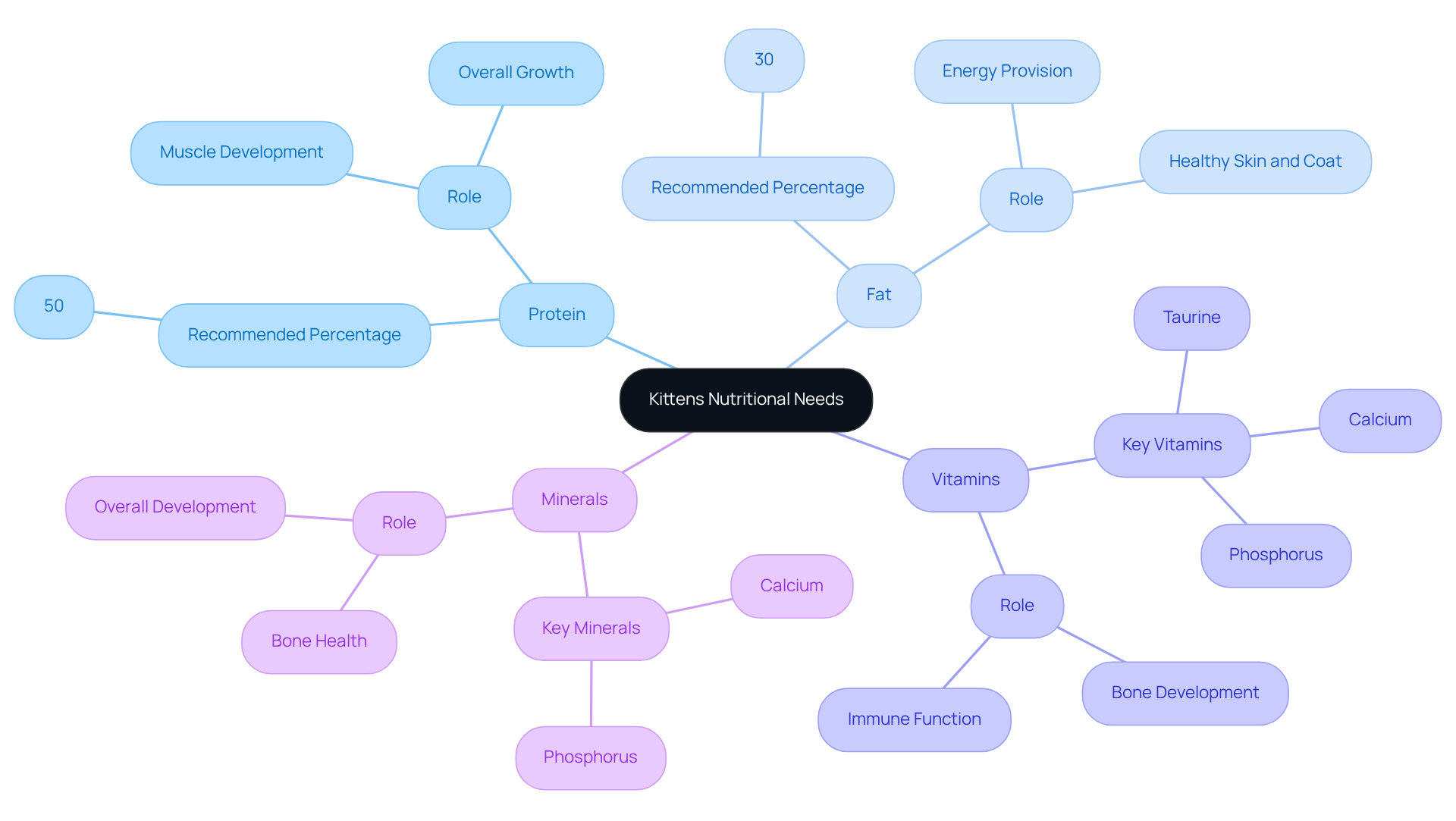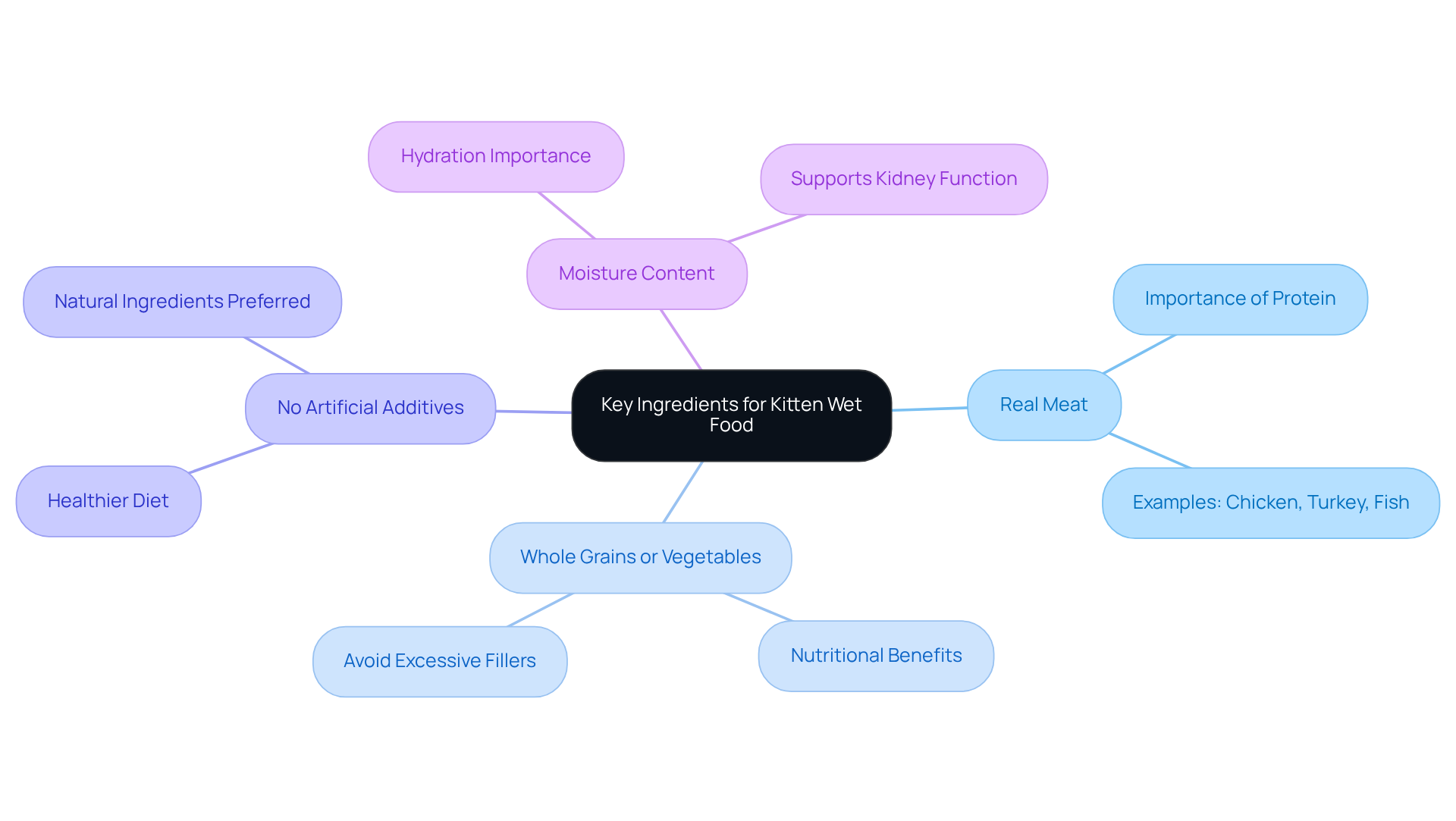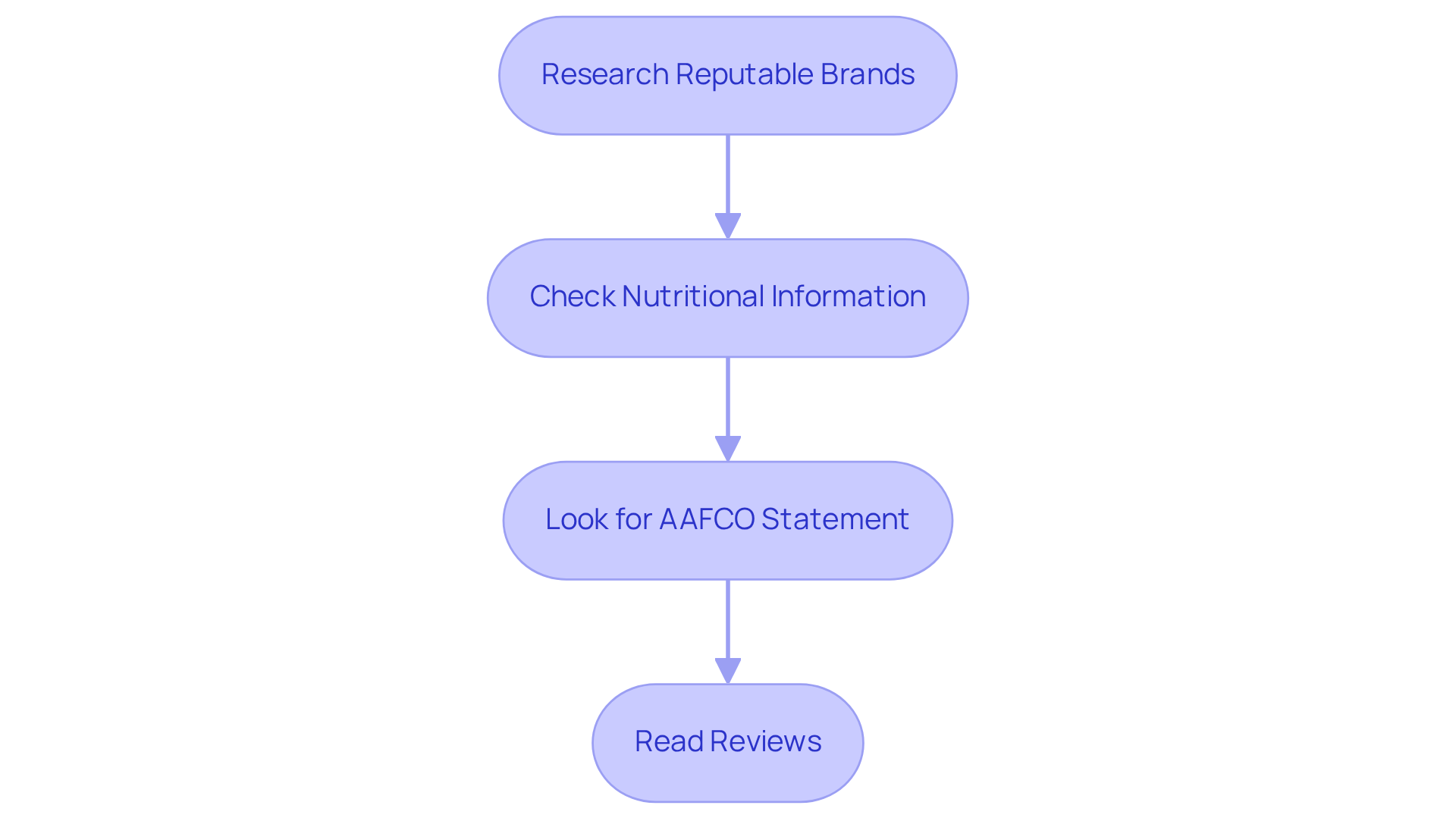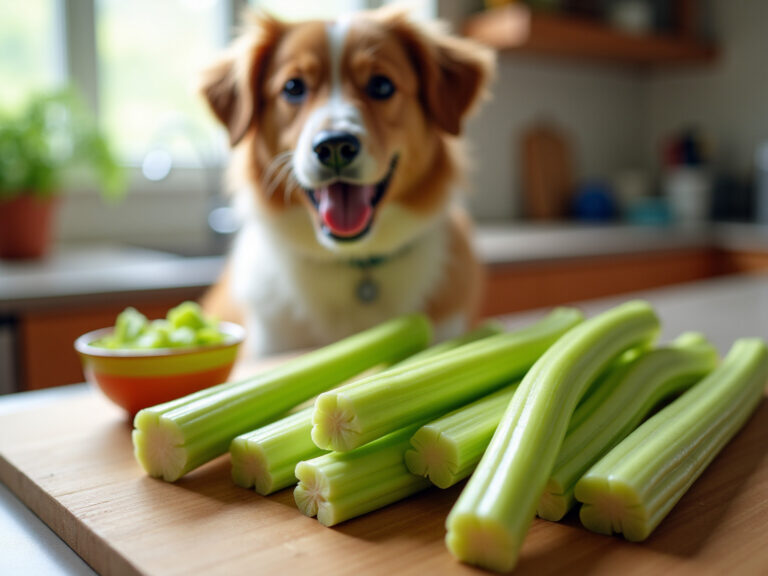4 Steps to Choose the Best Kitten Wet Food for Your Pet
Overview
Choosing the best kitten wet food for your beloved furry family member is a significant decision. It’s essential to focus on high-quality products that provide vital nutrients like protein, fat, and moisture, while steering clear of artificial additives. Understanding your kitten’s nutritional needs is the first step toward nurturing their growth and development.
As you explore options, consider the key ingredients that contribute to a healthy diet. Comparing different brands can be overwhelming, but knowing what to look for makes the process easier. Establishing a consistent feeding routine is also crucial; it ensures your kitten receives the appropriate diet for healthy growth.
By following these steps, you can feel confident that you are providing the best care for your kitten. Remember, your choice plays a vital role in their overall well-being. Let’s create a nurturing environment together, ensuring that your kitten thrives and grows into a happy, healthy cat.
Introduction
Selecting the right wet food for your furry family member is a crucial step in ensuring their healthy development and growth. With so many options available, it’s essential to understand the specific nutritional needs of kittens. This knowledge empowers pet owners like you to provide the best care for your beloved companions.
How can you navigate the overwhelming choices and make informed decisions that support your kitten’s well-being?
In this guide, we will explore the key ingredients, nutritional components, and effective strategies for choosing the best kitten wet food. Together, we can foster a nurturing environment for your precious pets.
Understand the Nutritional Needs of Kittens
Kittens are your furry family members, and they require a diet rich in protein, fat, vitamins, and minerals to support their rapid growth and maturation. Understanding their nutritional needs is essential for nurturing their development. Key nutrients include:
- Protein: This is vital for muscle development and overall growth. Look for kitten wet food that has high-quality animal proteins as the primary ingredient. A balanced diet for young cats should aim for approximately 50% protein to ensure they thrive.
- Fat: Essential for providing energy and supporting healthy skin and coat, the fat content should be appropriate for kittens, typically around 20-30% of their diet, with a balanced diet aiming for about 30% fat.
- Vitamins and Minerals: These are crucial for immune function and bone development. Ingredients like taurine, calcium, and phosphorus play significant roles in their health.
To meet their energy needs, kittens should be fed at least four times a day. When introducing new foods, do so gradually over a 7-10 day period to prevent any gastrointestinal upset. It’s also important to ensure that your young cats receive adequate hydration, as they are obligate carnivores and obtain much of their water intake through their diet, especially from kitten wet food.
For the best guidance tailored to your kitten’s specific nutritional needs based on their age, weight, and health status, consulting with your veterinarian is highly advisable. This will help you create a nurturing environment that supports their well-being and development.

Identify Key Ingredients and Nutritional Components
When selecting wet food for your kitten, it’s important to focus on these essential ingredients that contribute to their well-being:
- Real Meat: Prioritize specific meat sources such as chicken, turkey, or fish as the first ingredient. Real meat is crucial for kittens, supplying the necessary protein for their growth and maturation. Nutritionists emphasize that high-quality protein sources support muscle development and overall health in your furry family member.
- Whole Grains or Vegetables: These components can provide extra nutrients and fiber, which are beneficial for digestion. However, it’s best to steer clear of products with excessive fillers like corn or soy, as they can detract from the nutritional value.
- No Artificial Additives: Choose moist options that are free from artificial colors, flavors, and preservatives. Natural ingredients are consistently favored, as they promote a healthier diet for your beloved cat, including options like kitten wet food.
- Moisture Content: Ensure that the wet food contains at least 75% moisture. The high moisture content in kitten wet food is vital for keeping your young cat hydrated, supporting kidney function, and promoting overall well-being.
By thoroughly reviewing the component list, you can select a premium product that effectively aids your young cat’s health and growth, ensuring they thrive in a nurturing environment.

Compare Brands and Analyze Product Labels
To effectively compare brands and analyze product labels for the best kitten wet food, follow these essential steps:
-
Research Reputable Brands: Seek out brands recognized for their commitment to high-quality ingredients and backed by positive feedback from fellow pet owners. As pet industry experts emphasize, selecting brands that prioritize quality can significantly impact your furry family member’s health and happiness.
-
Check Nutritional Information: Examine the guaranteed analysis on the label, paying close attention to the protein, fat, and moisture content, which are crucial for your young cat’s growth and health. Remember, as James Herriot aptly puts it, “Cats are connoisseurs of comfort,” and providing them with the right nutrition is key to their well-being.
-
Look for AAFCO Statement: Confirm that the product meets the criteria set by the Association of American Feed Control Officials (AAFCO), ensuring it is appropriate for young cat development. This commitment to quality aligns with the values of reputable facilities like Adventure Den, which emphasize the importance of proper nutrition in fostering healthy pets.
-
Read Reviews: Explore online feedback and testimonials from other pet owners to evaluate the product’s effectiveness and palatability, assisting you in determining how well it meets your young cat’s needs. The experiences shared by fellow pet owners can provide valuable insights, reinforcing the bond of companionship that cats bring into our lives.
By diligently comparing these options, you can confidently choose the best kitten wet food for your young cat, ensuring they receive the nutrition they require for a healthy start.

Establish a Feeding Routine and Portion Control
Creating a feeding routine and managing portion control for your kitten is essential for their growth and health. Here are some thoughtful steps to guide you:
- Set a Schedule: Establishing consistent feeding times helps your young cat feel secure. Aim for three to four meals a day to nurture their developing needs.
- Follow Feeding Instructions: Check the feeding guidelines on the moist product packaging, making adjustments according to your kitten’s age and weight to ensure they receive the right nutrition.
- Monitor Weight: Regularly weighing your kitten allows you to adjust their portions as needed, helping them maintain a healthy weight as they grow.
- Avoid Free Feeding: Instead of leaving food out all day, offer measured portions to prevent overeating, ensuring your furry family member stays healthy and happy.
By establishing a consistent feeding routine and practicing mindful portion control, you can support your kitten in growing into a vibrant and healthy adult cat. Remember, your nurturing approach makes all the difference in their journey!
Conclusion
Selecting the right wet food for your kittens is a crucial step in ensuring their healthy growth and development. By understanding their specific nutritional needs, you can provide a diet rich in essential proteins, fats, vitamins, and minerals that support their rapid maturation. It is vital to prioritize high-quality ingredients, including real meat and adequate moisture content, to promote their overall well-being.
This article outlines key steps in the selection process. Start by:
- Identifying important ingredients
- Comparing reputable brands
- Analyzing product labels for nutritional content
Establishing a consistent feeding routine and practicing portion control further enhance your kitten’s dietary experience, ensuring they receive the right amount of nutrition at the right times. Consulting with a veterinarian can provide tailored advice to meet your individual kittens’ needs, reinforcing the importance of a personalized approach to their care.
Ultimately, choosing the best kitten wet food is not just about satisfying hunger; it is about nurturing a healthy, vibrant life for your furry companions. By making informed decisions, you can foster their growth and set the foundation for a long, happy, and healthy life. Embrace the responsibility of caring for these young lives, and remember that the right nutrition today lays the groundwork for a thriving adult cat tomorrow.
Frequently Asked Questions
What are the main nutritional needs of kittens?
Kittens require a diet rich in protein, fat, vitamins, and minerals to support their rapid growth and maturation.
How much protein should be included in a kitten’s diet?
A balanced diet for kittens should aim for approximately 50% protein to support muscle development and overall growth.
What role does fat play in a kitten’s diet?
Fat is essential for providing energy and supporting healthy skin and coat, with a balanced diet typically aiming for about 30% fat.
Why are vitamins and minerals important for kittens?
Vitamins and minerals are crucial for immune function and bone development, with ingredients like taurine, calcium, and phosphorus playing significant roles in their health.
How often should kittens be fed?
Kittens should be fed at least four times a day to meet their energy needs.
How should new foods be introduced to kittens?
New foods should be introduced gradually over a 7-10 day period to prevent gastrointestinal upset.
How do kittens obtain their hydration?
Kittens are obligate carnivores and obtain much of their water intake through their diet, especially from kitten wet food.
Should I consult with a veterinarian about my kitten’s diet?
Yes, consulting with a veterinarian is highly advisable to tailor your kitten’s nutritional needs based on their age, weight, and health status.







